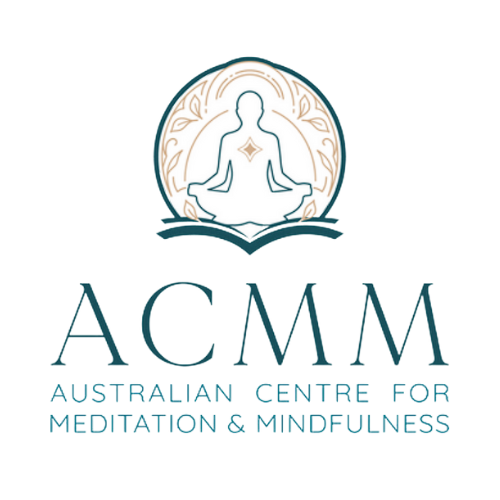Your Journey to Becoming a Meditation Teacher: A Path to Uplift, Inspire, and Transform
Are you considering becoming a meditation teacher? If so, welcome. You’re exploring a deeply fulfilling path that has the power to transform not only the lives of others but also your own. Teaching meditation is so much more than a career—it’s a calling, a way of life, and a beautiful opportunity to share the peace and joy of your practice with the world.
In this guide, we’ll walk you through what’s involved in becoming a meditation teacher, why personal practice is your foundation, and how to create a meaningful teaching practice that reflects your unique voice. Whether you’re new to meditation or a seasoned practitioner, there is space for you here.
Why Become a Meditation Teacher?
Ask any meditation teacher, and they’ll tell you it’s a role that fills your heart as much as it supports others. It’s a gift to guide others into stillness and to hold a safe, nurturing space where they can reconnect with themselves.
Most of us are drawn to teaching meditation because of our personal experiences. Perhaps meditation has been a lifeline for you during a challenging time, or maybe you’ve been practicing for years and feel ready to share its profound benefits. Whatever has brought you here, becoming a meditation teacher is a way to turn your experiences into something that uplifts others.
Core Message: Teaching meditation is an act of love and service, grounded in your own growth and compassion.
 Step 1: Start with Your Own Practice
Step 1: Start with Your Own Practice
Your personal meditation practice is the heart of your teaching. The more deeply you connect with your practice, the more authentically you can guide others into theirs. This journey begins with creating space—not just in your schedule, but in your mind and your heart.
Create a Space for Meditation
A dedicated space allows you to ground yourself and step into a world of presence. This space could be a cozy corner of your home, a favorite cushion, or even the ritual of lighting a candle. It’s about creating a safe and welcoming environment that invites you to let go and connect with yourself.
Over time, the repetition of your practice turns this space into a sanctuary. It becomes a familiar and comforting presence, ready to support you no matter how frazzled, stressed, or uncertain you feel.
Key Reflection: As you hold this space for yourself, you’ll learn to hold it for others—a foundational skill for any meditation teacher.
Step 2: Nurture Yourself Through Meditation
Teaching meditation isn’t just about giving—it’s also about receiving. Your practice is a wellspring of nourishment, offering you clarity, grounding, and support as you navigate life.
Journaling as a Self-Care Tool
One of the simplest ways to deepen your practice is through journaling. Two questions I recommend asking yourself daily are:
- How do I feel?
- What do I need?
These gentle questions help you build self-compassion and self-awareness, creating a foundation for mindful living. Through journaling, you’ll gain insight into your needs, emotions, and the techniques that resonate most with you.
Key Takeaway: By nurturing yourself, you’ll gain the wisdom and empathy to nurture your students.
Step 3: Embrace the Thrill of the Journey
Becoming a meditation teacher is an adventure, filled with moments of growth, challenge, and joy. As you deepen your practice and take steps toward teaching, you may encounter unexpected emotions or obstacles. This is all part of the process.
Think of it as your personal hero’s journey—an opportunity to grow stronger and more compassionate as you work through your inner and outer challenges. These experiences will shape your teaching, giving you the tools to guide others with authenticity and care.
Core Insight: The journey of becoming a teacher is as enriching as the destination.
 Step 4: Begin Your Training
Step 4: Begin Your Training
Once you feel ready to take the next step, finding the right training program is essential. The best programs will nurture your unique strengths and help you grow with confidence.
What to Look for in a Training Program
- Personalized Support: Look for one-on-one mentoring to guide your growth.
- Practical Skills: Ensure the program teaches you how to create your own meditation scripts and lead classes confidently.
- Professional Recognition: Seek a course recognized by reputable organizations like Meditation Australia or IICT.
At ACMM, we offer a flexible, personalized approach to training that meets you where you are. Our graduates leave with the skills and confidence to teach in diverse settings, from yoga studios to corporate offices, schools, and online spaces.
Step 5: Build a Teaching Practice That Feels Like You
Your meditation teaching practice can be as unique as you are. Whether you dream of leading women’s circles, supporting children in schools, or working in corporate wellness, the possibilities are endless.
Building Your Meditation Business
- Create Your Brand: What makes your teaching unique? Reflect on your passions and experiences to define your niche.
- Practical Foundations: Register your business, secure insurance, and set up simple systems for record-keeping.
- Reach Your Audience: Use tools like social media, workshops, and community connections to share your offerings.
At ACMM, we guide you through these steps, so you feel supported every step of the way.
Core Message: Your teaching practice can reflect your passions, experiences, and dreams.
The Rewards of Being a Meditation Teacher
Teaching meditation is a deeply rewarding path. You’ll have the privilege of supporting others in their journey to peace, while also enriching your own life in profound ways.
Our graduates have created inspiring practices, like Rachael Kable, who has written a book and runs a podcast and Frida Soerensen, who opened a wellbeing center in her local community. These are just two examples of how meditation teaching can align with your passions and purpose.
Core Reflection: Your life’s journey has uniquely prepared you to teach meditation in a way only you can.
Take the First Step
Becoming a meditation teacher is a decision you’ll never regret. It’s a journey of creativity, connection, and compassion—a path that brings joy to both you and those you guide.
What’s Next?
- Download the Course Guide to explore our programs.
- Book a Free Discovery Call to discuss your goals and questions.
- Enrol Today and begin your journey toward a life-changing career.
With love,
Lisa Forde
Founder, ACMM
FAQs
1. Do I need years of meditation experience to become a teacher?
No, you just need a willingness to learn and grow. Many of our students begin as passionate beginners.
2. Can I teach part-time?
Absolutely. Teaching meditation is flexible and can complement your current commitments.
3. Is the course accredited?
Yes, our courses are recognized by Meditation Australia and IICT, ensuring you’re ready to teach with confidence.


 Step 1: Start with Your Own Practice
Step 1: Start with Your Own Practice Step 4: Begin Your Training
Step 4: Begin Your Training


